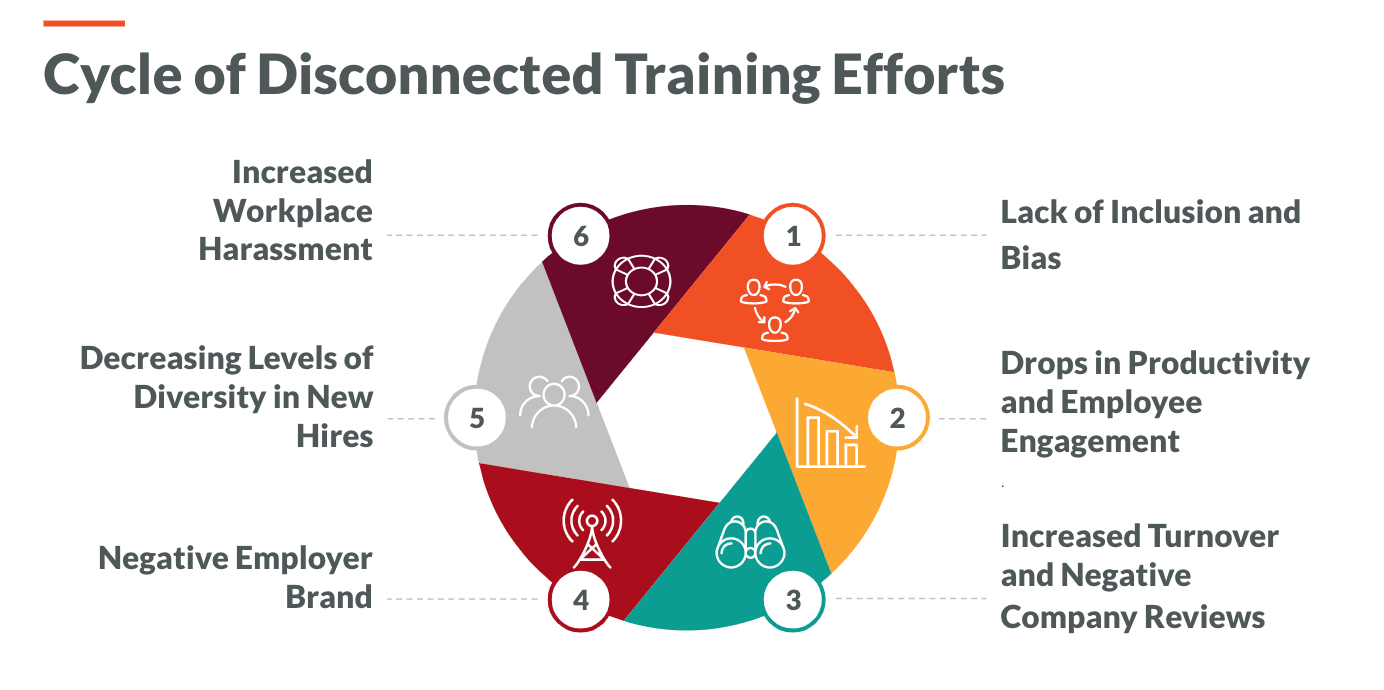Flat. Matrixed. Divisional. Functional. Most companies intentionally select an organizational structure that maximizes the collaboration, engagement, and effectiveness of teams and individuals. When it comes to harassment and discrimination (H&D) prevention and diversity, equity, and inclusion (DEI) efforts, however, structures and programs are often not as deliberately aligned to drive positive outcomes. We often see distinct silos between the team responsible for DEI trainings and the team that is responsible for anti-harassment and anti-discrimination training.
What is the Impact of a Siloed Approach?
Unfortunately, if you don’t have a cohesive approach to DEI training and H&D training, you are doing a disservice to both. Focusing your company’s efforts on just one area without the other, or failing to coordinate the two, can increase your risks of harassment and discrimination and undermine your efforts to create a healthy and inclusive workplace.
Do you know how much harassment could be costing your company? Calculate now.
Diversity training is a critical element of harassment prevention work. The EEOC has found that having a workforce that is homogenous, or where only a few employees from underrepresented groups are present, is one of the top risk factors for harassment. There are several reasons for this according to the EEOC:
EEOC Risk Factors of a Homogenous Workforce
- Employees in the majority may feel uncomfortable around those they view as “different.”
- Discomfort with differences in language, customs, dress, communication styles, and other behavioral patterns may cause employees in the majority to avoid, or actively exclude underrepresented employees to avoid awkward situations
- Dominant-group employees may feel threatened that employees of different backgrounds will cause the work environment to change.
These actions and beliefs, if left unchecked, increase instances of harassing and discriminatory behavior.
Unfortunately, having a diverse workforce with low levels of inclusion can exacerbate the tension, isolation, and power dynamics that can lead to harassment and discrimination.
Inclusion is a critical piece of a healthy workplace culture. One of the most important components of creating and inclusive workplace is encouraging behaviors that mitigate bias. These positive behaviors help address microaggressions that can escalate into harassment and discrimination and undermine efforts to foster inclusion.
Finally, just as ineffective DEI practices can lead to harassment and discrimination, harassing and discriminatory behaviors will undermine an organization’s DEI efforts. If addressing microaggressions or identity-based hostile treatment is not properly prioritized, employees will feel unsafe and unwelcome at work.
Why Connecting Diversity and Harassment Training is Vital
All of this leads to a dangerous cycle: lower productivity, engagement, employee net promoter scores and company loyalty within the organization will increase attrition and, likely, negative employee reviews on social media; these reviews and a damaged employer brand, in turn, serve to further undermine DEI recruitment efforts, leading to a decreasingly diverse workforce which then increases the likelihood of workplace harassment.

DEI and H&D are mutually reinforcing efforts. And unless you take a proactive, comprehensive approach to both, the vicious cycle will continue to damage your workplace culture.

